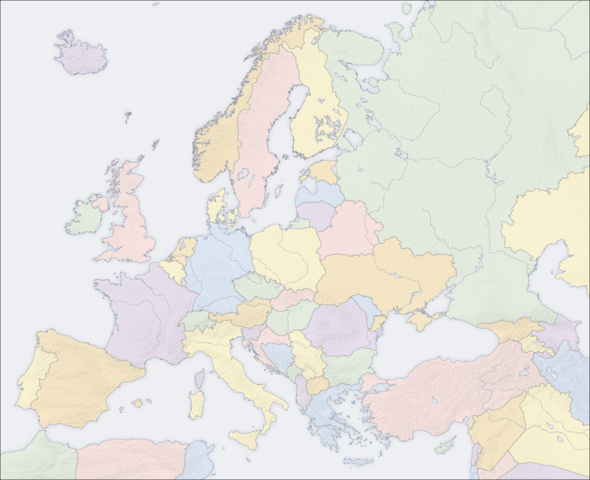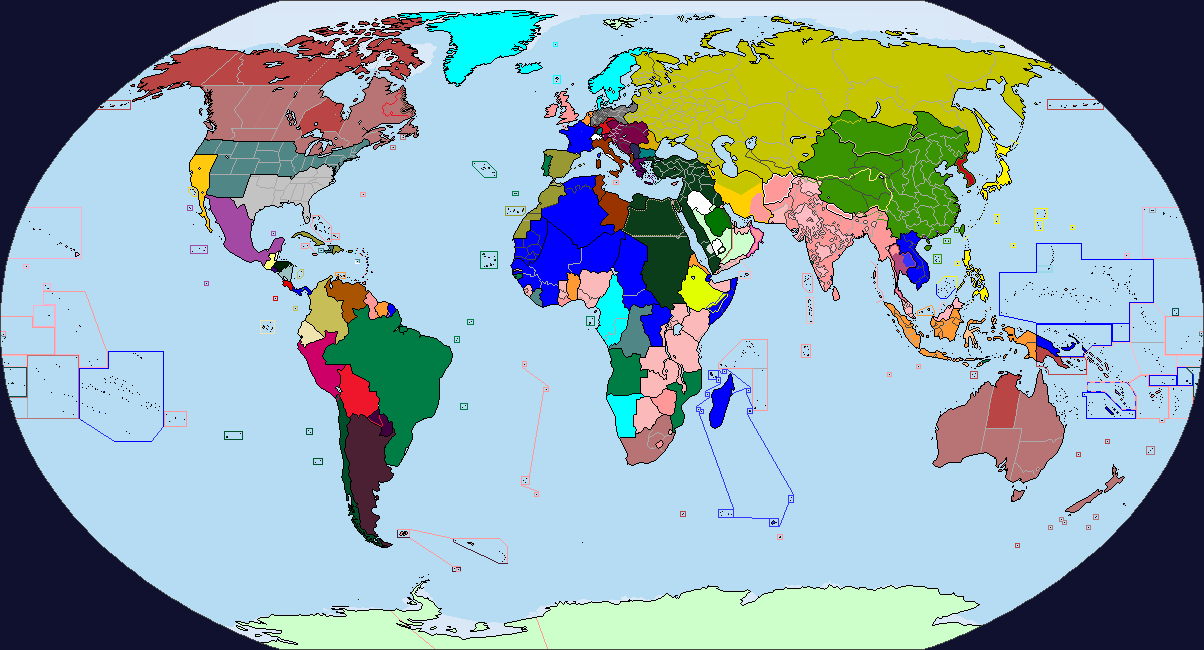The aftermath of the German Napoleon:
The world of 1st of January 1946
It has been over 18 months since the Axis capitulated in Europe, and millions of bodies have been laid in that foundation. The map of Europe has been changed forever, as parts of the meetings in Stockholm and Madrid. A bizarre situation has arisen in that the zones of occupation have not been perfectly represented in this case, leading to what Churchill has deemed ‘the Red Pincer’ around Europe. Countries that only recently unified are once again divided, both Germany and Italy are once again split across northern and southern lines. Yet even nations that have lasted much longer, such as Spain and the Netherlands have faced this fate as well. In Spain, a socialist government rules, but one which is open to the west, leading to it becoming part of a neutral group, retreating into isolationism after over 8 years of conflict, though one day hoping to reclaim its lost territories. The rest of Western Europe, consisting of the United Kingdom, France, the Benelux Union (Belgium, Luxembourg and what remained of the Netherlands), Bavaria, Portugal, Galicia, Euskadi, Catalonia and South Italy have formed the European Defence Force, formed to combat the threat of communism on a global scale. To this, they with the assistance of the USA have formed powerful anti-Communist nations such as Greater Indonesia, Abyssinia and the Indochinese Federation as buffers between themselves and the Red Pincer. Europe suffered the brisk of the fighting during the war, and so it is the one who once again must stave off another kind of enemy.
On the other side of the Red Pincer lies the organisation known as the People’s Pact. The USSR came on top of the Germans during the war due to a combination of factors. The invasion of Spain provoked Stalin into thinking that Hitler could not be trusted-if Hitler had attacked another socialist nation, why couldn’t he attack another? Also, the intensified mobilisation allowed his troops to be more effectively governed once war broke out, along with more industrialisation. The delays even allowed more factories to be built and even allowed them to annex Tanu Tuva and Xinjiang. While they lost over 11 million lives in the war, they have gained vast amounts of territory in Eastern Europe, though maintaining this territory could be stressful. They are also disappointed in not obtaining all of Germany, including Luxembourg and Alsace Lorraine, though this was due to negotiations during the conference at Madrid, to which Stalin grudgingly accepted. With the EDF to the west and the Balkan League to the South, their position is precarious, and Stalin is aware that war could come to him if he makes the wrong move.
In Asia, things didn’t go as smoothly for either side. With Germany and Italy out of the way, it allowed the allies to continue their work in Japan, which has cost them dearly as they were never able to capture scientists necessary for the Manhattan project, which still hasn’t been completed yet. Thus, the Americans and British were forced to launch an invasion of Japan, while the Soviet Union in August 1944 launched a rapid attack on Manchuria, Korea and Haikou, to try and gain what it could out of the conflict. Japan took a long time to pacify, but it has succeeded now, as the Fanatic coup failed and the Emperor entered an issue of surrender for the Japanese people. Even so, some fanatical warlords rose up to try and convince him otherwise, though these were crushed by the occupation. Japan is now divided across the velvet curtain between a north and South. The South remains a monarchy, though with a more active role of the emperor as compromise. The North on the other hand has fallen under the hands of a ruthless dictatorship that even Stalin is unsure of at the moment. How this will fair in future is debatable.
These regions are not the only places where conflict could arise though. In the Iberian Peninsula, no-one is sure when Spain will make its way at unifying Iberia, or how a collapse of Indonesia would be. Rumours have even arisen of Far Right forces amassing in Brazil, preparing to change the country by liberating it from American imperialism and from the dangers of communism.



